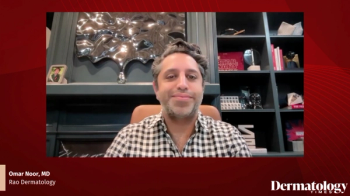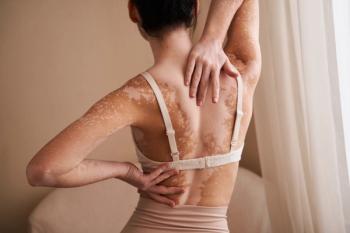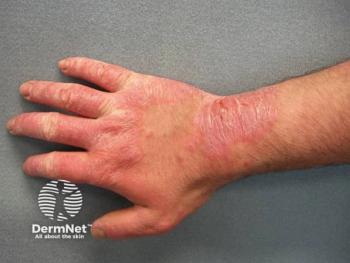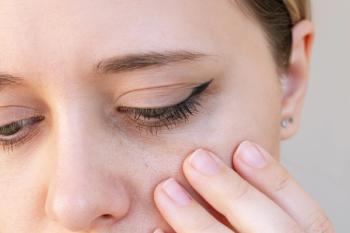
- Dermatology Times, July 2025 (Vol. 46. No. 07)
- Volume 46
- Issue 07
Learning From Patient Experiences of Melanoma
Key Takeaways
- Melanoma can manifest unexpectedly, affecting individuals of any age and appearing in nontraditional forms, such as nail stripes or unfamiliar spots.
- Routine skin exams and early detection are crucial in preventing delayed melanoma diagnoses, as highlighted by survivors' experiences.
Melanoma survivors share their diagnoses and advocate for early detection, routine skin exams, and public education to save lives.
In a compelling series of interviews for Dermatology Times’ Derm Dispatch, Renata Block, DMSc, MMS, PA-C, a dermatology physician assistant in Chicago, Illinois, sat down with 3 melanoma survivors whose experiences detail the devastating surprise of diagnosis, and the life-saving importance of early detection, routine skin exams, and public education. The conversations with Sarah Ogletree, Karolina Jasko, and Brittanny Groover reveal deeply personal journeys that reflect broader truths about melanoma: It can strike without warning, appear in unexpected places, and affect patients of any age. These survivors have each transformed their experiences into advocacy, hoping to prevent others from facing the same ordeal.
A Sudden and Shocking Discovery
Sarah Ogletree was just 25 years old when her life took a drastic turn. What started as a casual day at a friend’s pool in Dothan, Alabama, quickly escalated into something more serious.
“I got out of the pool and went into the bathroom with a friend of mine. I looked at my leg and I was like, what is...? I thought it was something from the pool or whatever, and I’m trying to get it off,” Ogletree recalled. “It did not come out, and it was black—like black black—and I’d never seen it before.”
Ogletree was a regular dermatology patient with a separate mole on her calf who was scheduled for examination, but this newly emerged spot prompted immediate concern during her visit. “The one on your calf, I’m not too worried about,” her dermatologist told her, “but the one on your thigh...does not look good.”
That unexpected diagnosis led Ogletree into a whirlwind of procedures and emotions. A former tanning bed user, she admitted, “I was stupid and tanned and tanned in a bed,” a behavior all too common among young adults.
Her story highlights a troubling paradox: Even patients who routinely see dermatologists can underestimate their risk. In Ogletree’s case, an offhand comment from her massage therapist about a mole on her calf indirectly led to the detection of the far more dangerous lesion on her thigh. “Just by the grace of God, I had that.... It all kind of happened right there in that whole span, that whole, you know, little 4-day block,” she said.
Melanoma in an Unexpected Place
Karolina Jasko’s experience with melanoma was equally alarming—and entirely different. Diagnosed with subungual melanoma in her high school years, Jasko was shocked to discover that her cancer originated not from a mole, but from a black line under her thumbnail. “I definitely didn’t think much of it at first,” she told Block. “But when the infection set in, I knew something wasn’t right, and that’s when I went to see a doctor.”
Initially misinterpreted as a nail bruise, the vertical stripe became painful and red. Only after seeking medical care did she learn it was melanoma, highlighting how the disease can manifest beyond the typical “ABCDE” warning signs of mole-related melanoma. Jasko acknowledged that routine dermatology exams were not a priority in her teen years, despite a family history of skin cancer. “We thought that I was still so young, it was hard to imagine that something would appear so early on,” she said.
Her story expands the conversation around melanoma to include lesser-known variants and encourages clinicians to educate patients about nontraditional warning signs. It also highlights the importance of dermatologic vigilance among adolescents, who may view skin checks as unnecessary until adulthood.
Delayed by a Pandemic, Not Deterred
For Brittanny Groover, the journey began with a familiar warning sign: a changing mole. What made her case particularly poignant was the timing. Groover had undergone annual dermatologic exams for years, but her 2020 appointment was delayed due to the COVID-19 pandemic. By the time she was seen, the mole on her shin had grown significantly and was quickly identified as melanoma.
Her diagnosis led to intensive treatments, including surgical excision, a skin graft, and a sentinel lymph node biopsy. After her cancer spread, she endured a full year of immunotherapy with pembrolizumab (Keytruda; Merck & Co). The adverse effects were grueling. “The side effects—colitis and pancreatitis—were worse than the cancer itself,” Groover shared candidly.
Today, she is cancer free but forever changed. Her message is directed primarily toward younger generations, many of whom still view melanoma as “just skin cancer.” She uses social media to share her experience unfiltered, reminding her audience that melanoma can be aggressive, recurrent, and even fatal. Through her advocacy work with programs such as “Don’t Fry Day” and the National Council on Skin Cancer Prevention, Groover pushes for early education. “We need to show teens how to do skin checks, not just hand them a brochure,” she said.
A Call to Action for Clinicians and Communities
Across these interviews, one theme is clear: early detection saves lives, but awareness is not always where it needs to be. Whether it’s an unfamiliar black spot, a vertical line on a nail, or a slowly changing mole, melanoma doesn’t always announce itself in obvious ways. Nor does it discriminate by age, sex, or geography.
“We have to take care of our skin,” Block emphasized. “It is something that should be considered an annual visit, just as all these other appointments…we make sure to [schedule].”
These stories are a stark reminder that providers must go beyond standard screenings. Education must reach patients early and often. Empowering patients to recognize suspicious lesions, question changes in their skin, and prioritize annual skin exams can prevent delayed diagnoses.
Articles in this issue
5 months ago
Dermatology Times July 2025 Print Recap5 months ago
Is AI Transforming Skin Care?5 months ago
The Value of RAD, According to Clinicians5 months ago
A New Canvas for Conversations in DermatologyNewsletter
Like what you’re reading? Subscribe to Dermatology Times for weekly updates on therapies, innovations, and real-world practice tips.



















